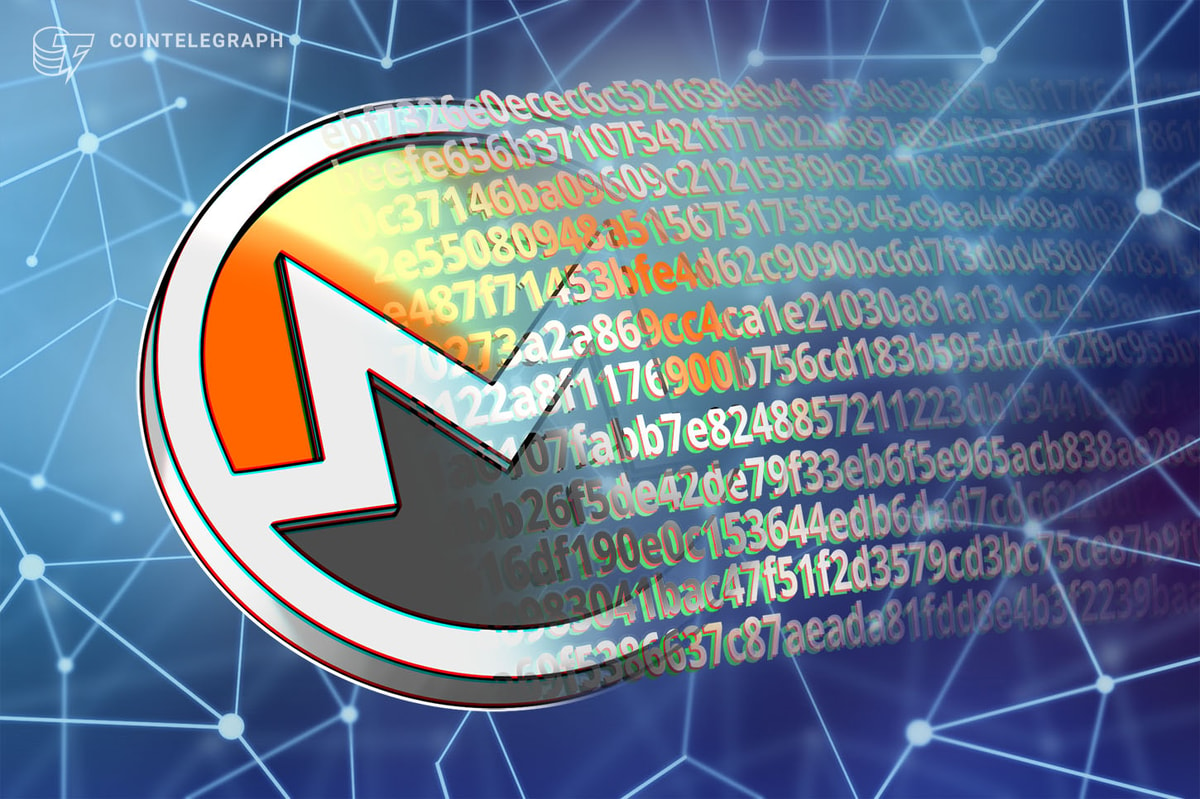
Nonfungible tokens (NFTs) are lastly on essentially the most notorious privacy-focused blockchain, however not everyone seems to be completely happy about it. Mordinals, or Monero Ordinals, are just like Bitcoin Ordinals in that they permit anybody to inscribe information alongside transactions saved on the Monero blockchain.
From decreased privateness on the community to storing unlawful content material on an undeletable database, the Monero group is throwing round many issues — however is there actually something to fret about?
What are Mordinals?
In January, Casey Rodarmor launched the Bitcoin Ordinals protocol, permitting anybody to inscribe arbitrary information alongside Bitcoin transactions. This allows customers to connect information to a single satoshi. The Ordinals protocol retains monitor of those satoshis, the linked information and their distinctive identifiers, facilitating nonfungible tokens on the community.
Mordinals are primarily a modified implementation of Ordinals on the Monero blockchain. Whereas Ordinals require information to be saved within the “witness” a part of a Bitcoin transaction, Mordinals use the “tx_extra” area that exists inside every Monero transaction. This has technically been attainable on Monero since 2014, however till now, there was no assist for it.
Criticisms towards Mordinals carefully mirror these levied towards its Bitcoin counterpart, however with a further deal with the way it might influence Monero’s privateness. The Monero group values privateness above all else, and introducing NFTs on a community that strives to make its tokens as unremarkable as attainable was by no means going to be straightforward.
To guard consumer privateness, Monero transactions are signed utilizing “ring signatures,” which bundle a transaction with a set of pretend ones. If an attacker with sufficient capital flooded Monero blocks with Mordinals, it could be trivial to differentiate precise transactions from the dummy NFTs. It is a real concern for Monero.
Journal: ‘Moral responsibility’: Can blockchain really improve trust in AI?
In 2020, america Inner Income Service supplied a $625,000 bounty to anyone who could help track Monero transactions, so it’s protected to say there’s a marketplace for conducting such assaults.
One other widespread criticism towards Mordinals is its potential influence on decentralization. As blocks get greater, storage necessities for nodes enhance, disincentivizing smaller nodes from staying on-line.
After all, the protocol might be upgraded to permit nodes to prune these transactions. Nonetheless, a blockchain depends on its nodes agreeing on the community’s state, and filtering out sure blocks or transactions might be construed as censorship.
Are Mordinals actually that unhealthy?
Monero, in contrast to Bitcoin, has a dynamic block measurement, and the concept that Mordinals may trigger the blockchain to increase abnormally is a professional concern within the Monero group. Nonetheless, looking at on-chain metrics, it doesn’t seem that blocks are rising wildly quicker.
Additionally, whereas Mordinals’ influence on privateness shouldn’t be taken calmly, some argue that the dangers might be fastened by means of updates.
In a Twitter thread on Mordinals, Cake Pockets vice chairman Justin Ehrenhofer said that Monero ought to take steps to restrict sure behaviors, because it has achieved for different privateness and fungibility dangers. “The Monero community is robust as a result of the privateness, safety, and effectivity of XMR is prioritized before everything. Every part else must play good with that aim,” he tweeted.
Some ideas on #Monero #Ordinals (#Mordinals).
I do not wish to blame folks for utilizing a community in a method that is allowed, however the Monero community ought to take steps, because it has achieved for different privateness and fungibility dangers, to restrict sure behaviors. A
— Justin Ehrenhofer ️ (@JEhrenhofer) March 17, 2023
In mild of the privateness implications, he believes the most effective plan of action is to restrict the scale of the tx_extra area inside Monero transactions to 256 bytes. This might considerably enhance the assault price of flooding the community with dummy transactions whereas offering flexibility for future use circumstances.
“Some Monero holders view NFTs as a menace to privateness,” Apollo Greed, CEO of gaming service provider service agency QGlobe Video games, instructed Cointelegraph. “Others acknowledge its potential worth and imagine that privateness might be maintained.”
Based on Greed, there’s huge potential for privacy-conscious NFTs in defending monetary information whereas promoting in-game belongings.
There’s additionally the opportunity of Monero getting used to retailer and promote unlawful content material. As an uncensorable privacy-focused blockchain, this might have dire penalties. However this has at all times been attainable on Monero, although previous to Mordinals, this is able to have required some technical expertise utilizing Monero’s command-line interface.
There’s little question NFTs have drawn plenty of consideration. Bitcoin (BTC) has almost doubled in worth for the reason that introduction of Ordinals, and whereas there are undoubtedly different elements impacting its value, Ordinals has significantly raised activity on the network. By storing information on the blockchain as a substitute of on the web or InterPlanetary File System like most Ethereum-based NFTs, Mordinals (and Ordinals) might assist result in elevated utility for NFTs.
What’s subsequent for Mordinals
Within the Twitter thread talked about above, Ehrenhofer mentioned the idea of Mordinals was at all times a identified chance and was just lately spurred by the success of Ordinals on Bitcoin and Litecoin.
The controversy on what to do with tx_extra has been ongoing for years, and the group seems to have at the least partially aligned itself with the Ehrenhofer, having since merged a patch to restrict tx_extra’s measurement to 1,060 bytes. Whereas it’s nonetheless 4 occasions bigger than his suggestion, this nonetheless makes it a lot tougher for somebody to assault the community.
On the one hand, tx_extra exists to make sure future interoperability with decentralized functions and different blockchains. The choice, eradicating tx_extra and including a specialised area that can not be abused, might kill sure tasks in improvement, just like the upcoming Serai DEX.
Nobody is aware of who created the Mordinals software program, and there’s a principle that the complete mission is a stunt being pulled by somebody throughout the Monero group to foyer for the elimination of tx_extra. Throughout an episode of the Monero Speak podcast, group member Ofrnxmr spoke a few publish he noticed on the Monero Analysis Lab (MRL) boards by a consumer named “Tx_extra” in late 2022.
The consumer urged eradicating the tx_extra area from Monero transactions, and when no motion was taken, they started importing MRL logs to Monero similarly to how Mordinals works. When requested to cease, they once more raised the subject of eradicating the tx_extra area.
Even when this principle is true, utterly stopping customers from storing arbitrary information on blockchains won’t ever be attainable.
A 2017 research funded by the German Federal Ministry of Schooling and Analysis shows how Bitcoin has been used to retailer unlawful content material and share malicious code since lengthy earlier than Ordinals existed
Latest: Stablecoin survival: Navigating the future amid global de-dollarization
When Ordinals launched, Rodarmor wrote about two key lacking options required for NFTs to thrive on Bitcoin: provenance and markets. Provenance is the power to find out who owns an inscription, and markets are crucial venues for NFTs to be purchased and bought.
These options go towards Monero’s broader ethos of anonymity and decentralization. There are components of the group who would like to see Monero compete with the likes of Bitcoin and Ethereum, however so long as the community’s values battle with how NFTs are valued, Mordinals are unlikely to achieve a lot traction with out introducing some severe utility.

